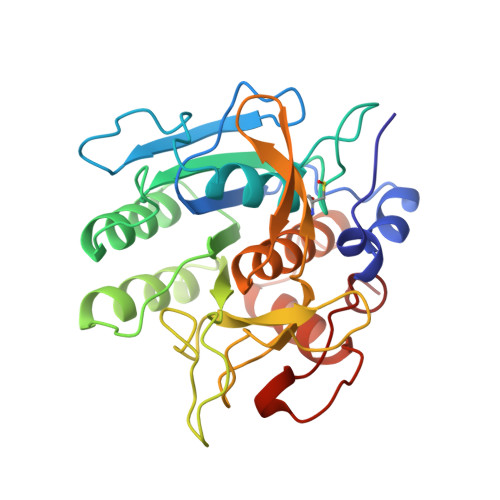Breaking the low barrier hydrogen bond in a serine protease.
Kidd, R.D., Sears, P., Huang, D.H., Witte, K., Wong, C.H., Farber, G.K.(1999) Protein Sci 8: 410-417
- PubMed: 10048334
- DOI: https://doi.org/10.1110/ps.8.2.410
- Primary Citation of Related Structures:
1YJA, 1YJB, 1YJC - PubMed Abstract:
The serine protease subtilisin BPN' is a useful catalyst for peptide synthesis when dissolved in high concentrations of a water-miscible organic co-solvent such as N,N-dimethylformamide (DMF). However, in 50% DMF, the k(cat) for amide hydrolysis is two orders of magnitude lower than in aqueous solution. Surprisingly, the k(cat) for ester hydrolysis is unchanged in 50% DMF. To explain this alteration in activity, the structure of subtilisin 8397+1 was determined in 20, 35, and 50% (v/v) DMF to 1.8 A resolution. In 50% DMF, the imidazole ring of His64, the central residue of the catalytic triad, has rotated approximately 180 degrees around the Cbeta-Cgamma bond. Two new water molecules in the active site stabilize the rotated conformation. This rotation places His64 in an unfavorable geometry to interact with the other members of the catalytic triad, Ser221 and Asp32. NMR experiments confirm that the characteristic resonance due to the low barrier hydrogen bond between the His64 and Asp32 is absent in 50% DMF. These experiments provide a clear structural basis for the change in activity of serine proteases in organic co-solvents.
Organizational Affiliation:
Department of Biochemistry and Molecular Biology, The Pennsylvania State University, University Park 16802-4500, USA.




















